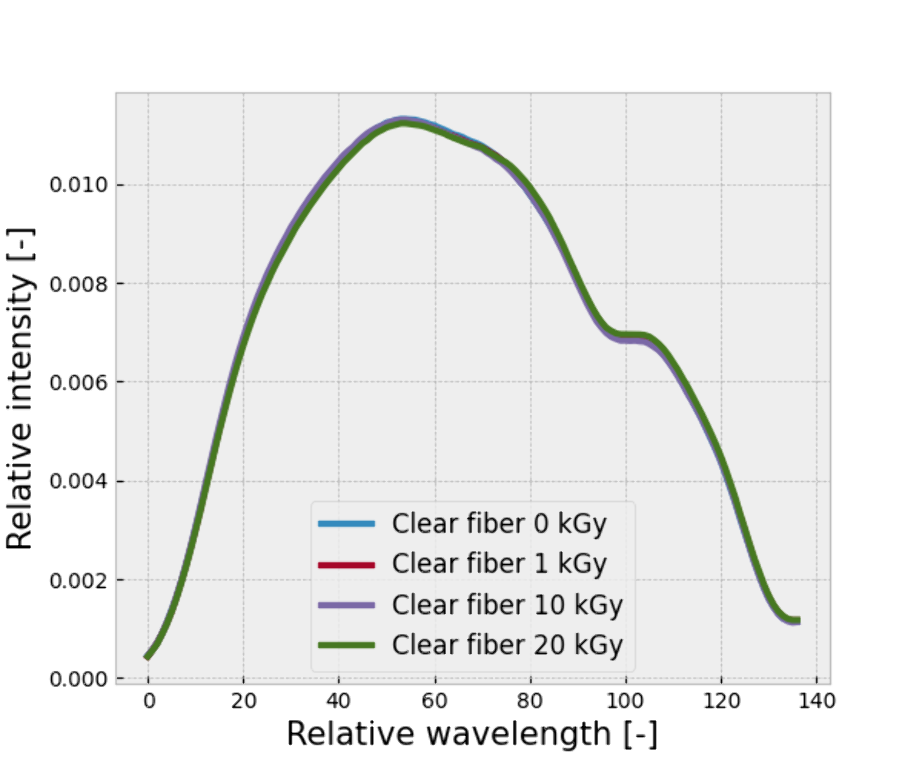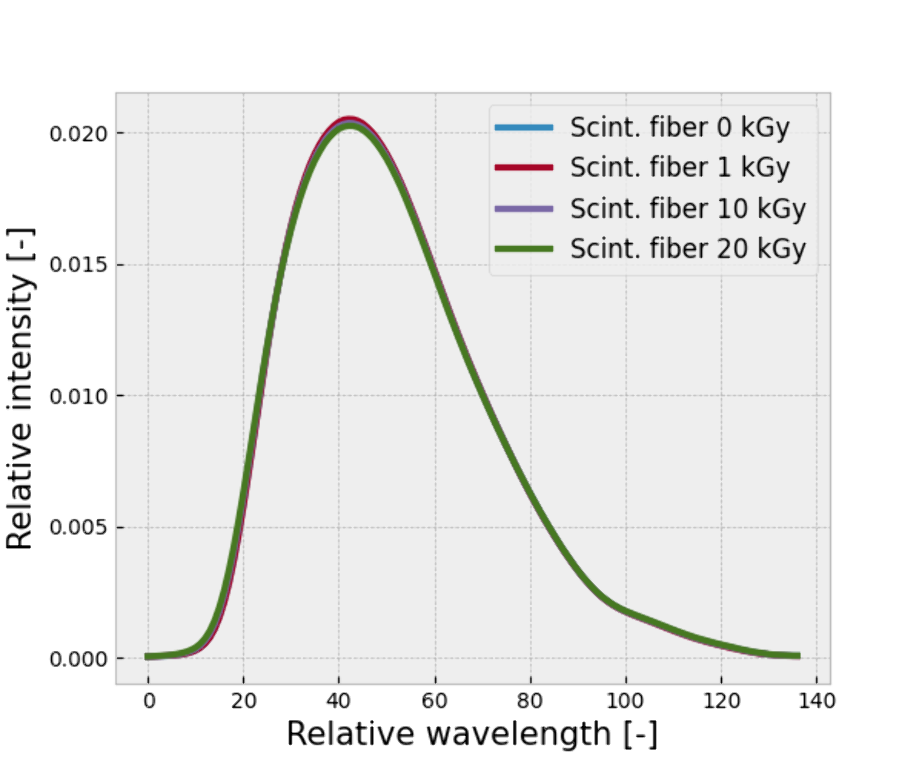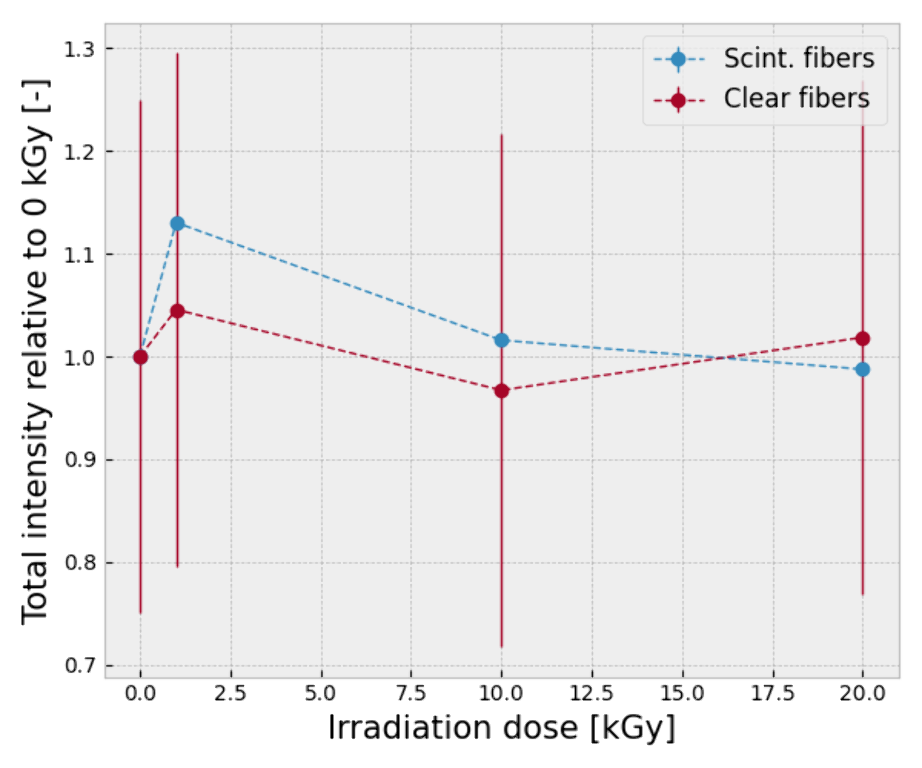
Presenter of 1 Presentation
PLASTIC SCINTILLATOR UNDER ULTRA-HIGH DOSE RATE ELECTRON BEAM: LONG TERM DAMAGES AND CHANGES IN OPTICAL RESPONSE
Abstract
Background and Aims
Background and aims: Scintillation detectors have advantages that could benefit dosimetry for FLASH radiotherapy, but radiation damages could alter their properties. This study aims at determining long term effects of ultra-high dose rate electron radiation on scintillation dosimeters.
Methods
Methods: Samples of clear and scintillating fibers (1 mm diameter, 15 mm long) were irradiated under electron beams with ultra-high dose per pulse (1 Gy/pulse, 20 MeV, 5 Hz, 2.5 µs pulse length) up to a total dose of 20 kGy. Scintillation and transmission of irradiated samples were assessed using the Hyperscint RP200 platform (Medscint inc., Canada), around 3 months after irradiation.
Results
Results: Emission spectrum remained stable for all doses (figure 1), with a maximum RMS difference of 0.002 between irradiated and unirradiated samples. The total light production and transmission seems minimally affected from irradiation, up to 20 kGy (figure 2). The error bars result from the differences due to sample manufacturing. However, further investigations will have to be made to confirm this statement.


Figure 1: Emission spectra of the irradiated samples.

Figure 2: Total intensity measured as a function of total dose.
Conclusions
Conclusions: Scintillating and clear plastic fibers do not show significant long term alterations when irradiated up to 20 kGy with ultra-high dose rate electron beams.
Acknowledgements: This project 18HLT04 UHDpulse has received funding from the EMPIR programme co-financed by the Participating States and from the European Union’s Horizon 2020 research and innovation programme. Special thanks to the team of Medscint inc. for their help in analysing the irradiated samples.
Author Of 1 Presentation
PLASTIC SCINTILLATOR UNDER ULTRA-HIGH DOSE RATE ELECTRON BEAM: LONG TERM DAMAGES AND CHANGES IN OPTICAL RESPONSE
Abstract
Background and Aims
Background and aims: Scintillation detectors have advantages that could benefit dosimetry for FLASH radiotherapy, but radiation damages could alter their properties. This study aims at determining long term effects of ultra-high dose rate electron radiation on scintillation dosimeters.
Methods
Methods: Samples of clear and scintillating fibers (1 mm diameter, 15 mm long) were irradiated under electron beams with ultra-high dose per pulse (1 Gy/pulse, 20 MeV, 5 Hz, 2.5 µs pulse length) up to a total dose of 20 kGy. Scintillation and transmission of irradiated samples were assessed using the Hyperscint RP200 platform (Medscint inc., Canada), around 3 months after irradiation.
Results
Results: Emission spectrum remained stable for all doses (figure 1), with a maximum RMS difference of 0.002 between irradiated and unirradiated samples. The total light production and transmission seems minimally affected from irradiation, up to 20 kGy (figure 2). The error bars result from the differences due to sample manufacturing. However, further investigations will have to be made to confirm this statement.


Figure 1: Emission spectra of the irradiated samples.

Figure 2: Total intensity measured as a function of total dose.
Conclusions
Conclusions: Scintillating and clear plastic fibers do not show significant long term alterations when irradiated up to 20 kGy with ultra-high dose rate electron beams.
Acknowledgements: This project 18HLT04 UHDpulse has received funding from the EMPIR programme co-financed by the Participating States and from the European Union’s Horizon 2020 research and innovation programme. Special thanks to the team of Medscint inc. for their help in analysing the irradiated samples.

